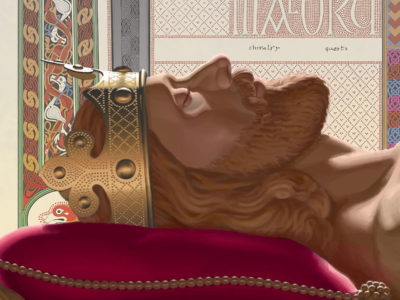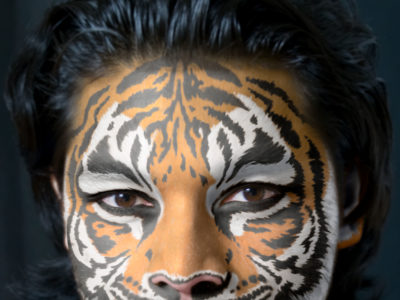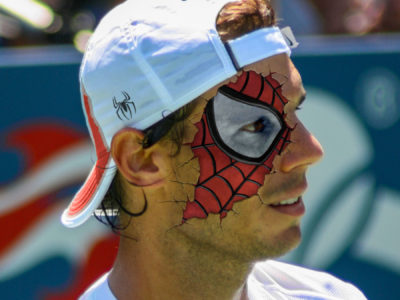An illustration depicting the sunset on King Arthur and the golden age of Camelot.
I’m a huge fan of Arthurian legend, so I was inspired to create artwork resembling either a book cover/title page or poster for Sir Thomas Malory’s definitive 1485 retelling of popular stories about King Arthur, his knights, and their quests.
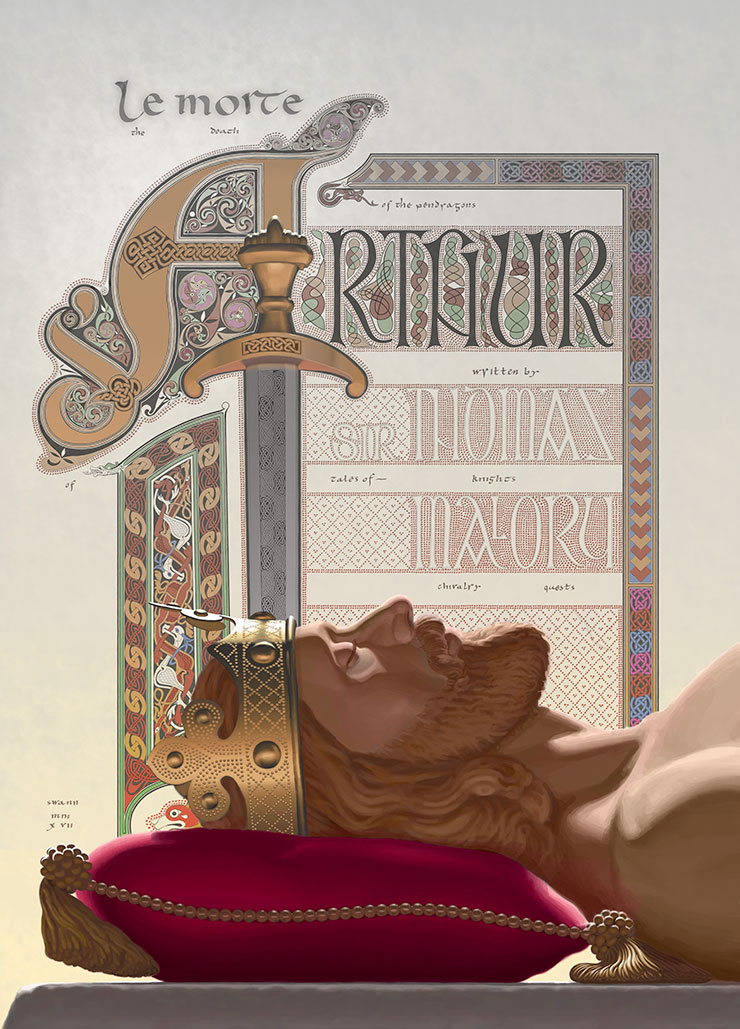
From what Malory tells us, King Arthur was brought to a chapel upon the Isle of Avalon by many maidens in black hoods and three queens (including Arthur’s half-sister Morgan le Fay (a.k.a., Morgaine, Morgana, etc.). The author claims ignorance to whether Arthur died or was hidden away while in a state of perpetual sleep until the day he recovered from his wounds and would restore the kingdom.
This illustration is oozing with details
So let’s look at a few of the details:
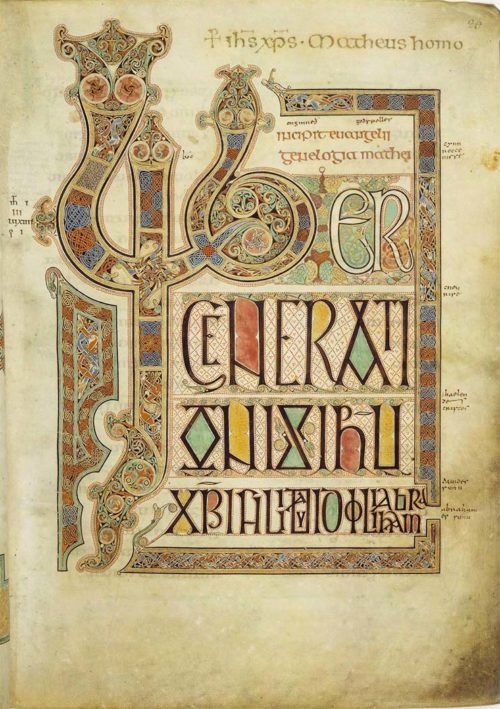
The background for my illustration was inspired by 8th century illuminated manuscripts known as the Lindisfarne Gospels (the Gospel of Matthew shown here). The manuscripts pre-date what is believed to be the timing for Arthur’s adventures by about two centuries. However, I love their layout, intricately designed details, and they scream, “This is the Medieval period!”. Their design can also be associated with a chapel’s stained glass windows in the context of my illustration.
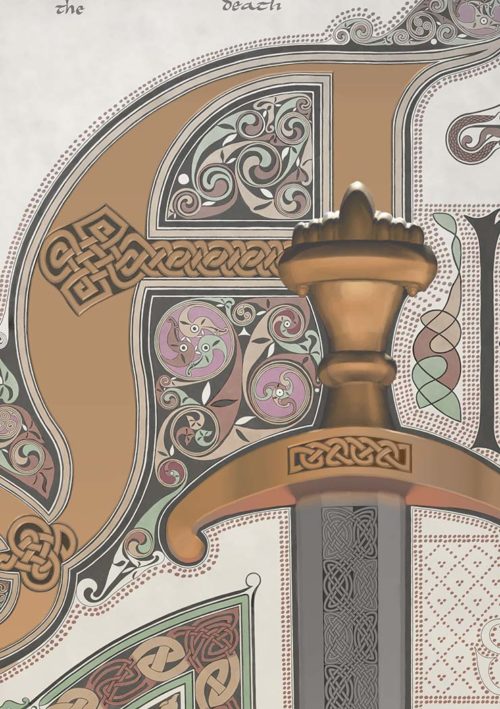
Per the Lindisfarne Gospels, I designed the “d’A” along with the hilt of King Arthur’s sword Excalibur into a prominent Gothic Uncial monogram.
Excalibur’s etched blade then leads the eye down to the side of Arthur’s head (an allusion to how an impaled Mordred used his sword to deal a mortal blow to the side of King Arthur’s head at the battle of Camlann).
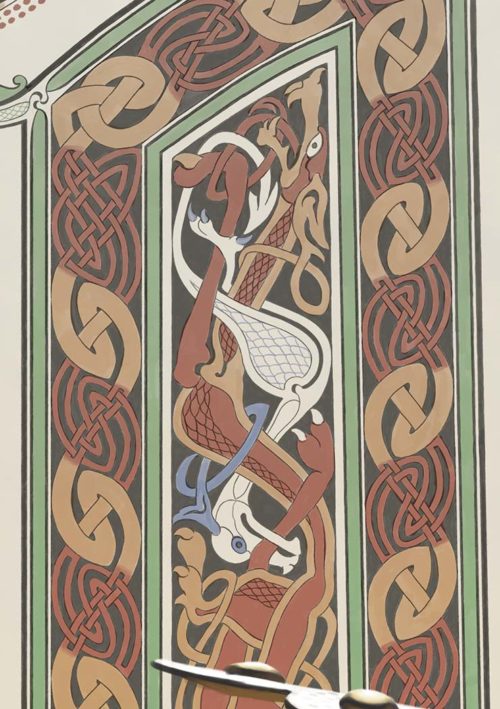
King Arthur and his Pendragon family are associated with a red dragon. While not covered in Le Morte d’Arthur, a battle between a red and white dragon has gained popularity in Arthurian legend. So I designed this pattern where the white dragon is biting the red dragon (Arthur).
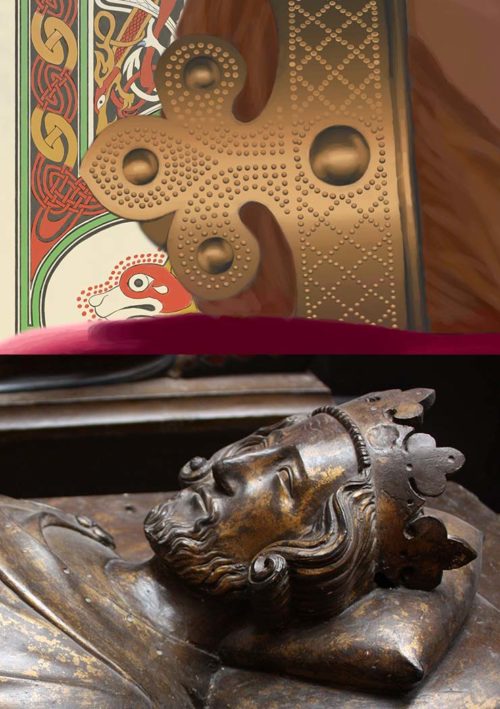
I based King Arthur’s crown upon this effigy of King Henry III. Yes, it dates to the 13th century — well after Arthur — but it has a noble simplicity. If you know “Raiders of the Lost Ark”, it’s like when Indiana Jones recognizes the most humble chalice as being the Holy Grail. I personally don’t envision Arthur being comfortable in audacious jewels.
Meanwhile, note in this detail that Arthur’s dog is weeping for the king’s death/sleep.
I created this illustration as a “capabilities/advertising” piece. Maybe that’s where it’s usage ends. Or maybe it could be used as the cover for a reprinting of the book, or sold as posters to fellow Arthurian legend fans. Contact me if you have an opinion.
And if you like my vision of Le Morte d’Arthur, please use the buttons below to share this post.

